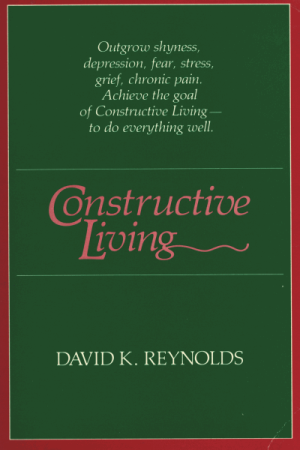For the past two years I’ve surveyed people about their strengths and weaknesses when it comes to the skills of mindfulness and attention. Mindfulness as an idea is quite well known, but as a practice it actually involves a collection of attention-related skills. I’ve identified four skills that relate to the way we use our attention:
- Single-Pointed Attention (Focused Attention)
- Broad (Scanning Attention)
- Attention to Detail
- Presence (Present Moment Attention)
Generally, when it comes to these skills, we each have our strengths and weaknesses. In the course I teach on A Natural Approach to Mental Wellness, I’ve collected more than 100 self-assessments from participants from more than a dozen countries. Guess which of these four Attention skills is most often considered a “weakness” when people assess themselves:
PRESENCE
It appears that for many of us, one of the biggest attentional challenges we face, from the moment we wake up, is paying attention to what’s going on in our life as it happens. Instead of being here, our minds take us elsewhere. We live in some thought or idea in our mind while real life just passes by. The Zen teacher, Charlotte Joko Beck refers to this as living a “substitute life.”
In my Mental Wellness course, there is a practice exercise each day, and I’d like to share today’s exercise since it has to do with Presence, something many of us probably need to practice.
Give Presence to People
Your goal today is to give 100% presence to the people you are with. This might be the check-out person at the supermarket, your colleague in a meeting, or your partner at the dinner table.
You’ll need to listen to the other person intently when they’re speaking to you — you can’t multitask and be 100% present. Make eye contact. When someone’s in your presence, notice them — what they’re wearing, their smile, the style of their hair. Listen closely to what they’re saying, rather than formulating your response while they’re still talking.
Be present when talking to someone on the phone, as well. If you notice your attention wandering, just bring it back to the other person.
When you’re with someone, offer them the experience of being important to you. At that moment, they’re the only person in the world who has your attention — your complete attention.
*****
This exercise shouldn’t be that hard, but it is. A major obstacle is technology. We don’t make eye contact with the person we’re with. We attempt to point two different senses in two different directions – we listen to someone while we look at something else.
The Zen teacher, Mary Jaksch, identifies the following barriers to being present:
- Your mind is on other things and you are only pretending to listen
This is similar to what we contend with in meditation. The way to get past this barrier is by refocusing on the ‘now’. Tip: Open your awareness to ambient sounds as well.
2. You don’t want to interact, but don’t want to say so.
You need to make a decision whether you are willing to put your activity aside and really listen, or whether you are going to speak out and claim this time as your own.
3. You feel defensive.
Thoughts fueled by strong emotions create gripping mind-movies. When we feel defensive, strong thoughts and stories are created that start with “But…!” It’s as if we bat away everything we are hearing, instead of taking it in. Notice your defensiveness and put aside all the ‘but’ stories for now.
4. What you hear triggers emotions and stories in your own mind.
You’ll notice that your own stories are triggered by a desire to interrupt the other person and tell your own story. So often people break in with, “Yes, I know exactly what you mean! Here’s what happened to me …” Their own story has become so vivid that they can’t listen to what the other person is saying. When you notice this tendency in yourself, take a deep breath and refocus on what the other person is saying.
The wonderful thing about this exercise is there are at least two distinct benefits: You get to stay connected to your real life instead of the one you’ve created in your mind, and, you offer the person you’re with an experience of feeling important, even loved.
The present of presence.
Gregg Krech will be teaching the online course, Gratitude, Grace and a Month of Self-Reflection based on his book on Naikan and Japanese Psychology. Starts November 16, 2016.
Tags: Attention Mental Wellness Mindfulness Relationships
















Comments are closed.
In general, I don’t think it’s our job to teach other people to be present or to listen unless they are asking for guidance. Our best approach is to model “presence” and in some cases people will notice, in other cases they won’t. In intimate relationships we can raise the issue of listening as a precursor to a conversation. We might agree to ground rules where the person listening first restates or validates what they heard before responding. If we agree, we are agreeing to take on such a practice as partners. But otherwise, we can easily use our own “presence” to develop a self-righteous attitude toward others.
Thank you for your reply, Gregg. You make excellent points. There is one thing that I did not ask clearly— When I said “Is there anything for us to ‘do’ about that?” I meant what do we ourselves do, perhaps “for” ourselves, in this case? For example, let’s suppose you are recounting to a friend something difficult that happened at work and you notice that their attention is wandering—they are not “present” with you—then do you somehow gracefully and quickly bring your story to a close? (This would be a case where it is not the type of relationship where one could bring up ground rules, as you suggested previously). Maybe this simply falls into the category of acceptance of the interaction as is? Dealing with such issues in real life is often much harder than how we view the interaction in our mind’s eye 🙂 Thank you again for your thought-provoking articles.
Hi HC,
I don’t think we can settle on a rule or guideline for such situations. So much depends on what your role is in relationship to the other person. And what is happening that prevents them from being present. If I were with an employee or my teenage daughter and they started reading a text as I was having a conversation with them, I might simply wait. I also don’t schedule phone consultations with people if they wish to do so while they are driving. But if I’m speaking with my 91 year old aunt I’m more likely to be accepting and not imposing my values on her behavior. So I think we have to respond based on the circumstances of the moment.
Hi, Gregg~~ Your reply with real-life examples is excellent! I can relate to each of the situations that you describe, and probably many other readers can, too. Very helpful! Thank you for taking the time to provide such a relevant response.
Good post, Gregg. I am wondering about your response to the following: Regarding point #4— When we are on the other side of this coin, when we are recounting something to another person and they are not being fully present with us and immediately jump in with their own story without spending anytime (or maybe just a few seconds) reflecting/responding to what we have said, how would you suggest that we respond? I can even sense the person reliving their own past story, and they seem oblivious to how our conversation began. I know how it makes me feel . . . .But is there anything for us to “do” about that? When the other person isn’t in the present with us?